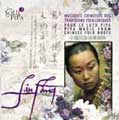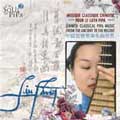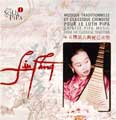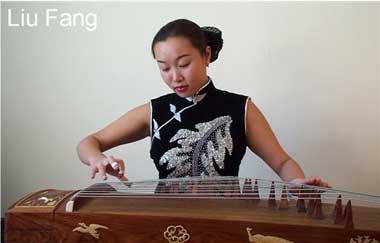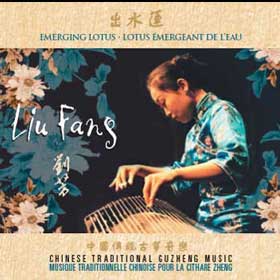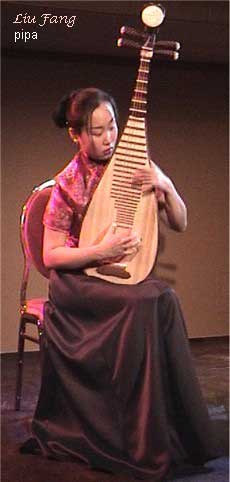
|
The pipa is a four stringed lute with a pear-shaped body. Its short, bent neck has 30 frets which extend onto the soundboard, offering a wide range. This instrument appears in texts dating up to the second century B.C. There are a lot of written texts of the Han Dynasty (206 BC - 220 AD) about pipa music played and the stories that inspired the composition for those pipa pieces. Since the Tang Dynasty (618-907), the pipa is one of the most popular Chinese instruments, and has maintained its appeal in solo as well as chamber genres. The pipa technique is characterised by spectacular finger dexterity and virtuosi programmatic effects. Rolls, slaps, pizzicato, harmonics and noises are often combined into extensive tone poems vividly describing famous battles or other exciting scenes. The instrument is also capable of more lyrical effects in pieces inspired by poetry, landscapes and historical themes. Pipa music has been loved by Chinese people through centuries and there is a large repertoire of pipa music handed down from generation to generation through individual artists and scholars. (more ...)
![]() Liu
Fang concert live @ RTBF La Première (national radio)
Liu
Fang concert live @ RTBF La Première (national radio)![]()
![]() Liu
Fang concert live in St. Petersburg & the reportage from Russian TV
Liu
Fang concert live in St. Petersburg & the reportage from Russian TV
- An introduction to traditional and classical music from China
- A brief history of pipa
- "The
Chinese Pipa" - by Caroline Baker (Heather J. Hasan
BellaOnline's Chinese Culture Editor) - About pipa music
- Press review for Liu Fang's pipa playing
- Pipa Song by Bai Juyi(772-846 AD)
- Liu Fang's pipa solo albums - traditional and classical pipa music
- Liu
Fang's pipa playing MP3 samples

